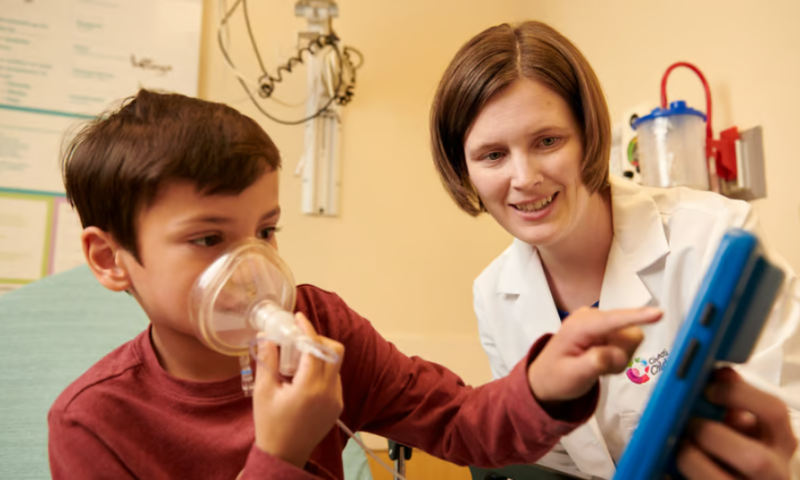Kids going in for surgeries requiring anesthesia may soon breathe a little easier, thanks to a video game designed by a nurse practitioner at Cincinnati Children’s that aims to allay any pre-op jitters.
The game is called EZ Induction. True to its name, it slyly helps kids to control their breathing and calm their anxiety to ease the anesthesia induction process. It was created by Abby Hess, DNP, who works in the Cincinnati Children’s pre-anesthesia consultation clinic, the hospital announced Tuesday.
“Many young patients become anxious when an anesthesia mask is placed over their face in the operating room,” Hess said in the announcement. “I wanted to find a way to help kids feel calmer during this high-anxiety moment.”
Hess developed the game with the support of the Ohio Third Frontier Technology Validation and Start-up Fund and the Cincinnati Children’s Innovation Ventures department, the latter of which “has about 500 projects in our pipeline” at any given time, according to VP Abram Gordon. The game has already been licensed to Columbus, Ohio-based LittleSeed Calming Technologies, which plans to begin rolling out the game to other hospitals this year.
The EZ Induction app is installed on a tablet. It depicts a brightly colored world of animals whose actions—such as opening the gates of a zoo, crossing a canyon in a hot-air balloon, looking for hidden treasure and more—are controlled by steady breaths through an anesthesia mask. Sensors embedded into the tablet’s case pick up on those breaths to advance gameplay.
Before heading into the operating room, kids play the first few levels of the game using a demo mask, helping them to control their breathing and get used to the mask, and therefore calming any anxieties about the upcoming surgery—while also distracting them from thinking about the surgery. When it’s time to begin the operation, they’re invited to play the final level of the game in the OR, while connected to an actual anesthesia mask.
“The game shifts the focus from something scary to something that’s calming and fun,” Hess said. “It easily engages kids, teaches them to breathe calmly and lets them know what to expect when they go back to the operating room.”
She added, “Seeing their child engage with the game also helps parents feel at ease and provides them with a novel way to coach their child during the process.”
Hess and Cincinnati Children’s aren’t the only ones hoping to make kids feel more comfortable during daunting medical procedures. Last year, immersive software maker Before and Saritasa Technology Solutions unveiled a virtual reality program that allows children and teens to familiarize themselves with the medical tools and setup of an OR before their surgery begins.
Philips, meanwhile, has introduced a digital app in which kids can coach a virtual animal pal through the process of getting an MRI before they enter the machine themselves—where that same virtual character will return the favor via a built-in screen by guiding the child through the process of holding their breath while the scan is performed.

